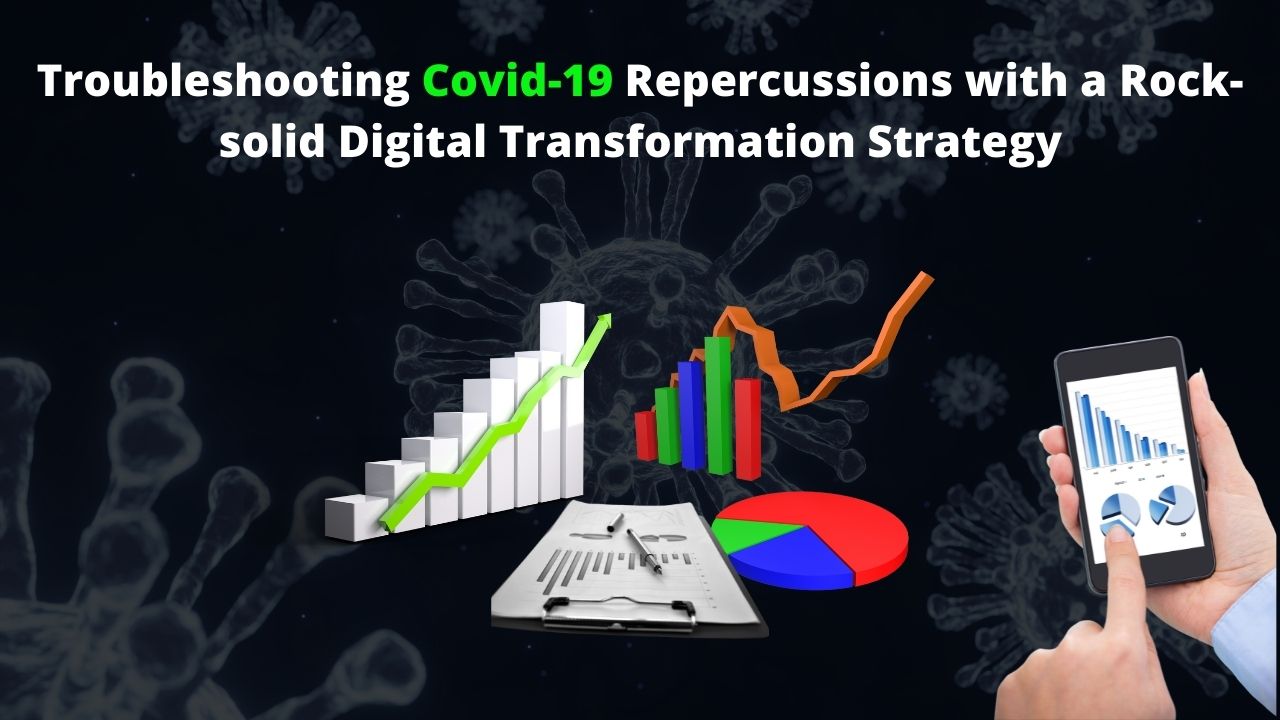Coronavirus turmoil has transformed the way brands do business globally and the impact of the pandemic was felt far beyond the outbreak. Post-pandemic, enterprise infrastructures thrashed to the ground and economic landscapes crashed as the effects of COVID-19 started unfolding. The aftermath of Covid-19 is colossal, and here’s how a robust digital transformation blueprint can prepare brands for what lies ahead.
One of the most important lessons that Covid has taught the entrepreneurial forefront so far is to adapt. Nothing is permanent, and the only thing that is going to last for quite a few decades is the digital infrastructure powered by robust technological advancement. As the Covid chaos is back again and history is repeating itself atrociously since March 2021, the spines of many unprepared organizations have started trembling. However, those businesses who learned their lessons and switched to digital marketing have a crisis cover prepared to face the disaster.
During the tough times of Covid, digital transformation isn’t just a new experiment, it is the need of the hour because brick-and-mortar marketplaces are beginning to collapse because of the social distancing protocols and digital marketplaces will again run the business showbiz.
Types of Digital Transformation
Digital transformation is a multi-dimensional sport. To be consistent with the efforts and spur revenues, organizations must mirror the several types of DT in their best possible form. There are four different types of digital transformation:
- Business Process transformation: Some well-known brands like Dominos and AirBus have engaged in process transformation to enhance customer engagement and streamline business operations. Ranging from APIs, data, and analytics to ML, AI, and other technologies, a significant part of technologies can be used to transform the business process for lowering costs, increasing quality, and reducing cycle times. Business process transformation requires focused efforts on certain areas of the business and hence they are more likely to bring value to enterprises among all the four processes.
- Business model transformation: Where process transformation emphasizes finite areas of business, model transformation is aimed at business blueprints that are the cornerstone of how value is delivered by the organizations. Familiar examples are Apple’s reinvention of iTunes, Netflix’s reinvention of video distribution, and Uber’s reinvention of the taxi industry. These companies achieved success by changing the fundamental building block of value and opening new growth opportunities.
- Domain transformation: Domain transformation happens when a business starts as one venture and then slides into another area successfully. One prominent example is Amazon. It started as an online retailer and then it expanded into a new market domain with the grand launch of Amazon Web Services which is the largest cloud computing infrastructure service in the world now.
- Cultural/ Organizational Transformation: This is about getting everybody on the same page. As it can be seen that digital transformation involves some tiny as well as gigantic changes and full, long-term consistency requires redefining organizational processes, mindsets, and capabilities. This is why cultural transformation is necessary to make workflows agile and improve decision-making processes by better collaboration by teams and leaders.
Roadmap to Digital Transformation
The pandemic made it evident that market disruptions affect the shiny Silicon Valley start-ups, SMEs, and corporate giants equally. Ranging from the time in 2009, when Uber transformed the entire outlook of the taxi industry till now, a lot has changed. For businesses of all sizes, the need for digital transformation is clear. However, the question here now is how to get there? Enterprises that are looking up to their digital transformation outcomes can always follow the following DT roadmap, which involves 7 concise steps:
- Get buy-in for a centralized team because without united efforts, the DT ship never even leaves the harbor.
- Once businesses get everyone on board, they can start crunching the numbers as the budget helps to structure the DT strategy.
- The next step is to assess the current state of the organization by evaluating the skill set of the workforce, mapping out processes, operations and identifying opportunities and pain points that need emphasis.
- Identify what are the business goals and outline what you want to achieve through digital transformation.
- Conduct a gap analysis and determine the areas that need to be bridged, what are the inefficiency and redundancies and what resources will be needed.
- Illuminate the routes that can help you to achieve your goals. This might include reskilling employees, reframing infrastructure, transitioning to a more agile development process, and recruiting new talent.
- Testing the DT strategy for accuracy and efficiency of the proposed goals.
The digital transformation of marketing
The physical marketing channels have shut down and brick and mortar stores have moved online. Marketing products with billboards and brochures are a thing of the past. No one has the time to read brochures now. Advertisement mediums need to be crisp and hyper-focused to entice customers within a snap. In an epoch where every customer is glued to their screens, what can be a better way to entice customers into the sales pipeline than a digital marketing strategy? Ranging from social media marketing to SEO services, PPC, and SMO, digital marketing can go a long way in keeping the customers hooked.
Conclusion
Digital marketing isn’t a large monolithic process. It is a consolidation of parts of innovation and peerless consistency. To make their digital marketing strategy successful, enterprise owners must adopt new analysis metrics and give more attention to the long-term value of digital initiatives. Every branding model must be sufficed with an integrated cross-functional technique and an experienced digital marketing agency for flawless end-to-end execution.
Searching for a leading digital marketing company? Get in touch with the professionals at Yuved Technology now. Drop us a line now to get a quote.


